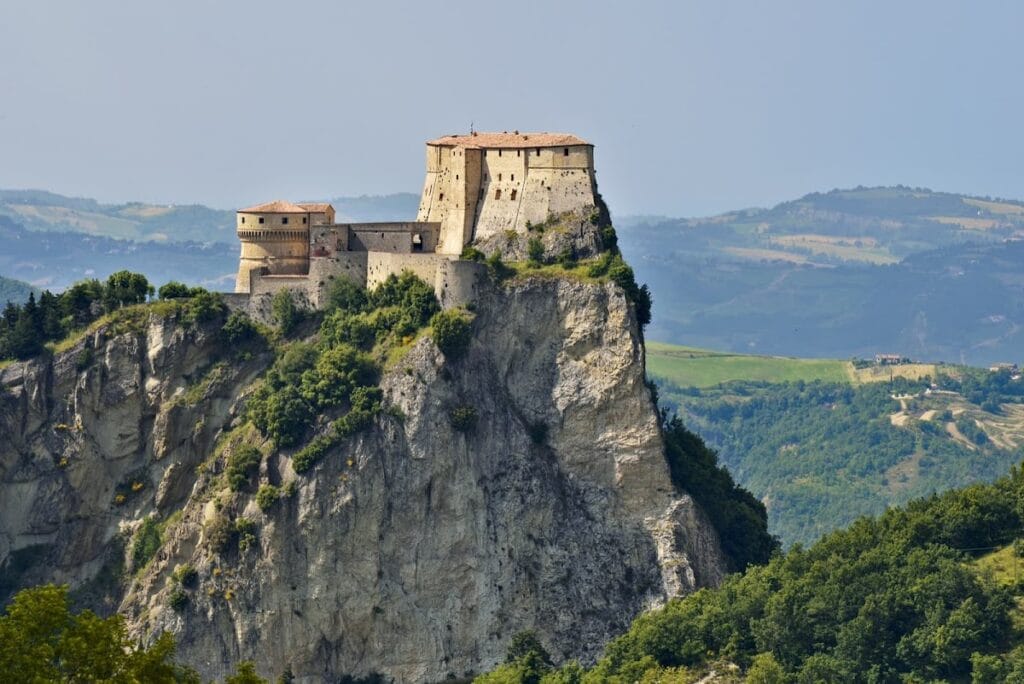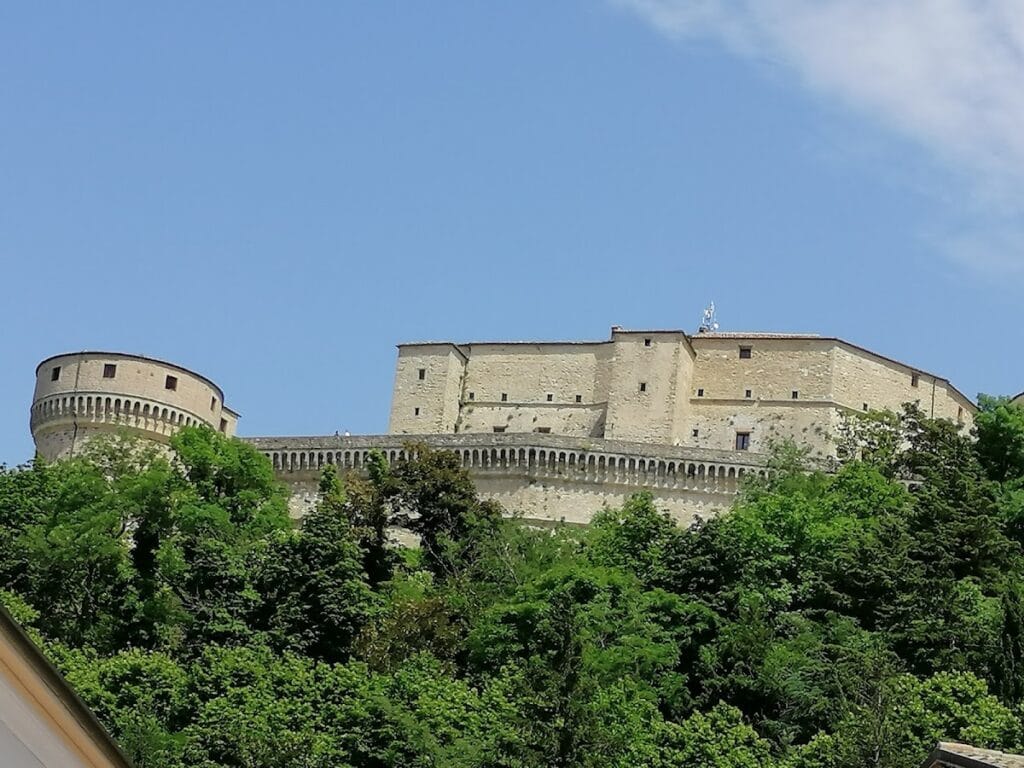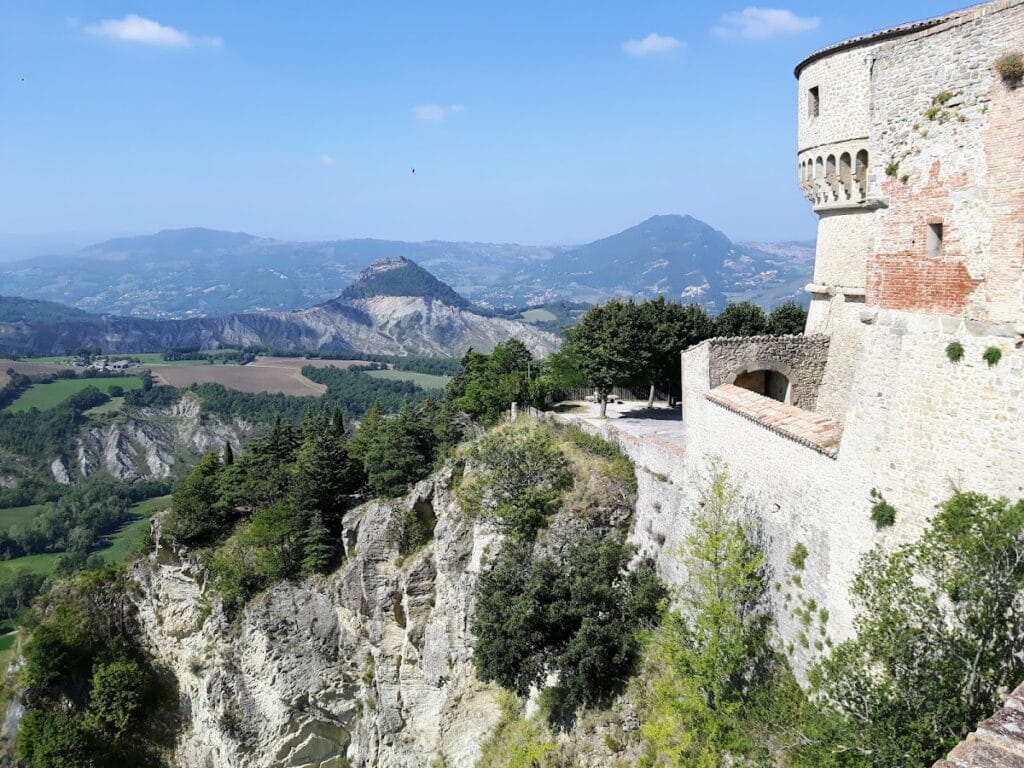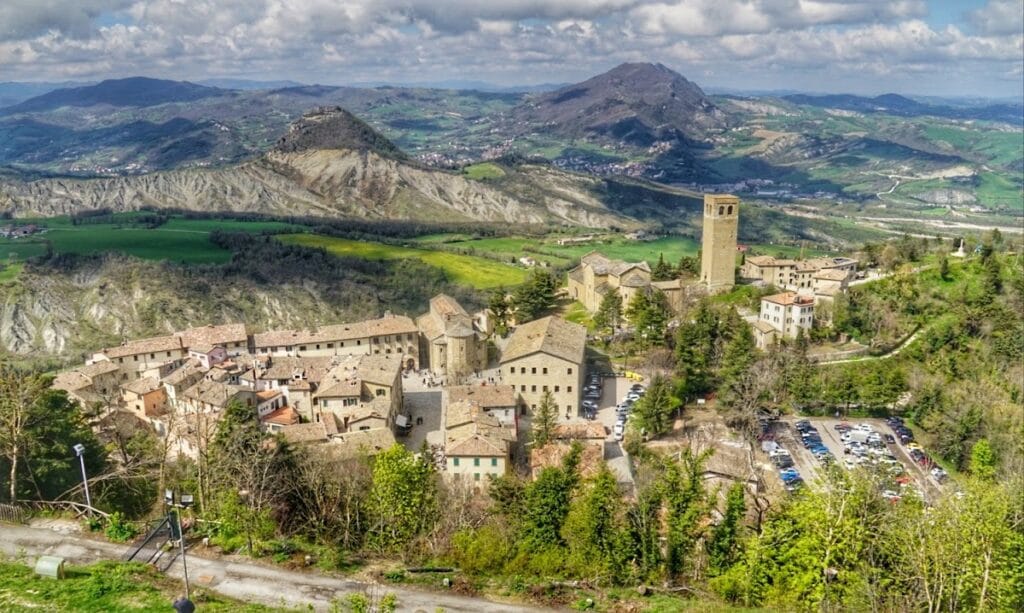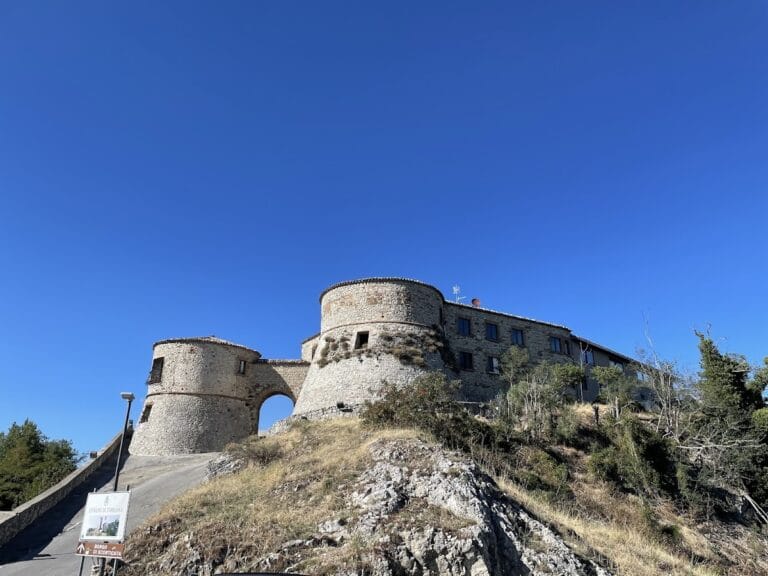San Leo Fortress: A Historic Military Stronghold in Italy
Visitor Information
Google Rating: 4.7
Popularity: Medium
Google Maps: View on Google Maps
Official Website: www.san-leo.it
Country: Italy
Civilization: Medieval European
Remains: Military
History
The Fortress of San Leo, rising above the town of San Leo in Italy, was initially established as a fortified site during Roman times. Its commanding position atop a rocky summit made it a strategic stronghold controlling the surrounding Valmarecchia valley.
During the early Middle Ages, the fortress became a contested military prize among several powers, including the Byzantines, Goths, Franks, and Lombards. In the period between 961 and 963, Otto I the Great laid siege to the fortress for nearly two years, ultimately capturing it from Berengar II, the final Lombard king of Italy. This event marked a significant transfer of control in the region’s turbulent political landscape.
By the mid-11th century, the Counts of Montecopiolo had established dominion over the area known then as Montefeltro, adopting both the name and title that would identify their rule. The site’s control remained in flux for several centuries, as the Malatesta family, noted condottieri or mercenary leaders in the late 14th century, sought to take the fortress. Power shifted intermittently between the Malatesta and Montefeltro families until the mid-15th century.
A dramatic change occurred in 1441 when the young Federico da Montefeltro seized the fortress by a daring assault. Recognizing the need to modernize defenses in response to evolving artillery technology, he commissioned Francesco di Giorgio Martini, an engineer from Siena, to oversee extensive rebuilding. This reconstruction adapted the fortress for active defense with artillery and counterattack strategies, making it a formidable military installation.
In the early 16th century, the fortress changed hands again. In 1502, Cesare Borgia, with backing from Pope Alexander VI, took control. However, following the Pope’s death in 1503, Guidobaldo da Montefeltro reclaimed the fortress. A few years later, in 1516, the fortress was taken without significant resistance by Florentine troops allied with Pope Leo X and led by Antonio Ricasoli. From 1527, it became part of the holdings of the Della Rovere family until the Duchy of Urbino was absorbed into the Papal States in 1631.
Beginning in the 17th century, the fortress’s role shifted from military use to incarceration. It was adapted into a prison for notable inmates, among them the mystic and adventurer Alessandro Cagliostro and the revolutionary Felice Orsini. The fortress remained active as a penitentiary until 1906, with a limited disciplinary military function lasting until 1914.
Administratively, the town of San Leo was part of the Marche region until 2009 when, following a referendum in 2006, it was transferred to Emilia-Romagna. This change was maintained after legal challenges were resolved. Since 2014, the fortress has been under the management of the Italian Ministry of Culture, integrated into the regional museum network, and officially designated as a museum directorate from 2019 onward.
Remains
The Fortress of San Leo is composed of two main sections: an upper citadel and a lower complex that includes both residential and defensive structures. The upper citadel, the oldest part of the fortress, features a square keep known as the mastio. This section also retains a Gothic-style entrance that provides access to the citadel. The keep and its towers stand as a key component of the medieval defensive system, constructed predominantly from stone and preserving the solid form characteristic of its era.
The lower part of the fortress was built later and contains large round towers connected by thick stone walls and residential buildings. These elements are unified by an extensive curtain wall supported by corbels—projecting stones that originally helped support defensive structures like battlements. Together, the two prominent round towers, the curtain wall, and the upper keep enclose a central open area called the Piazza d’Armi, which served as a parade ground and gathering space for military purposes.
Perched on a steep, nearly vertical rocky slope facing east towards the Romagna plain, the fortress’s position makes direct attack from this side nearly impossible. The approach to the fortress follows a winding path that crosses a series of rocky outcrops, some of which historically hosted smaller fortified positions. These intermediate sites are today often marked by chapels and churches, indicating a layering of defensive and religious functions over time.
The fortress’s design incorporates strategically placed artillery positions on the sides of its structure, enabling defenders to unleash crossfire against attackers attempting to approach. The entry routes to the fortress themselves were carefully guarded by military outposts, deliberately situated so as to prevent enemies from gaining advantageous firing positions. These combined features contributed to making the fortress both a stronghold and a center for controlled military engagement.
Constructed primarily from durable stone, the structure exhibits well-preserved elements from the medieval and Renaissance periods, reflecting advancements in military architecture. Despite the compactness and density of the fortifications, interior spaces maintain a relatively open aspect, reflecting adaptations made during its later use as a prison. This dual function is evident in the way rooms and courtyards were arranged to balance security with internal organization.
